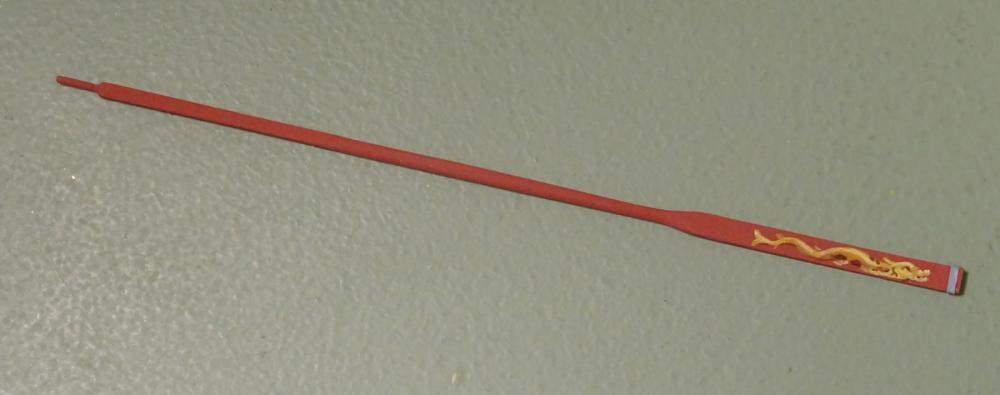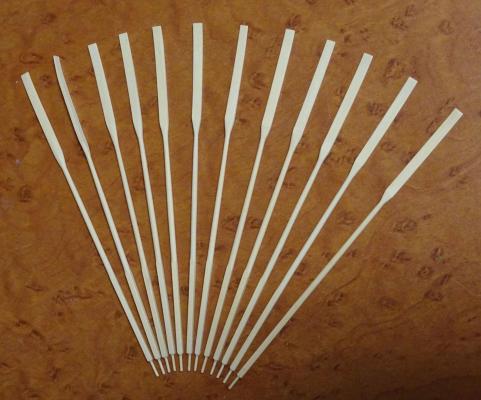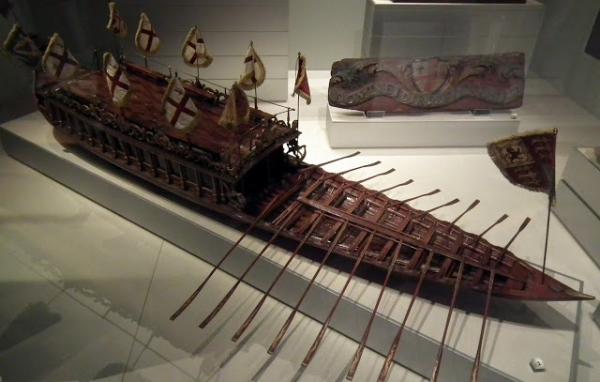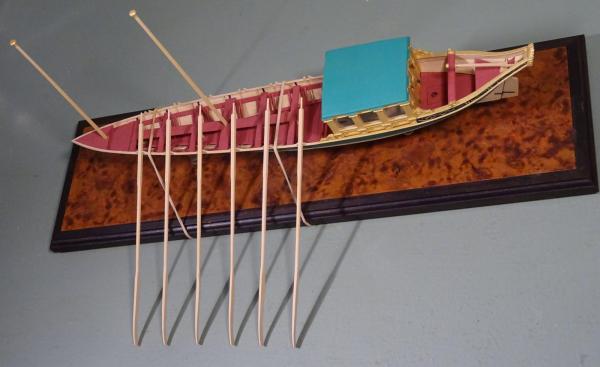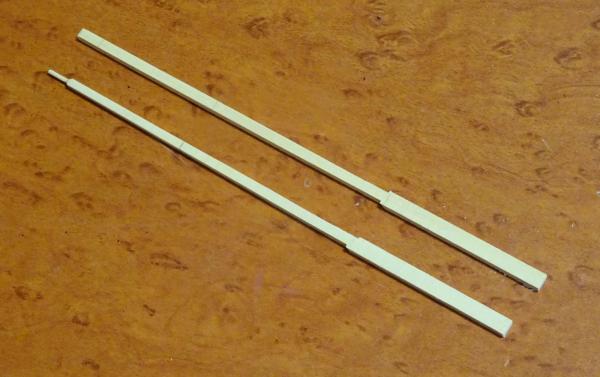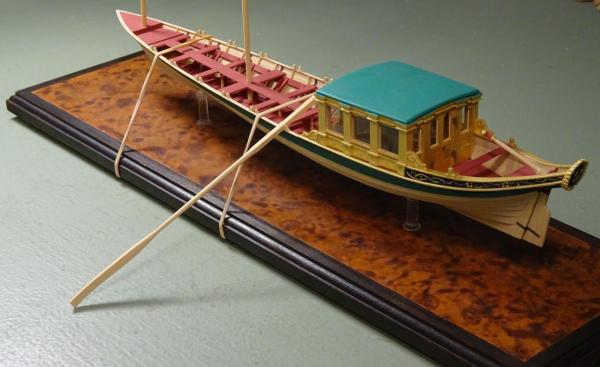-
Posts
13,274 -
Joined
-
Last visited
Content Type
Profiles
Forums
Gallery
Events
Everything posted by druxey
-
Thanks for the pictures and comments, everyone. How do I curve the blades? They are carved that way. I thought of steam bending, but they would never be entirely consistent. The dolphin paint job is done with high-grade watercolour sable brushes in 0 and 1 sizes, using acrylic paints.
- 641 replies
-
- greenwich hospital
- barge
-
(and 1 more)
Tagged with:
-
The first of twelve dolphins has been painted. It is based on an actual example in the RMG collection. By the way, the oar blade is ⅛" wide. Eleven more to go! (Click on the image to see the complete sweep)
- 641 replies
-
- greenwich hospital
- barge
-
(and 1 more)
Tagged with:
-

Pandora by marsalv - FINISHED - 1:52
druxey replied to marsalv's topic in - Build logs for subjects built 1751 - 1800
Terrific progress, Marsalv. -
Just catching up on your progress. Lovely work and detail!
- 184 replies
-
- ruby & arthur reed
- lifeboat
-
(and 1 more)
Tagged with:
-
Free floating at an appropriate level, E&T. As the sweeps will overhang the base by some distance, there will be sub-base as well. Thanks for the other comments above. I've decided to paint dolphins on the blades. Why not? The oars are now crimson and look a little unfinished yet. More later.
- 641 replies
-
- greenwich hospital
- barge
-
(and 1 more)
Tagged with:
-
I think, after much thought (read 'dithering'!) I've come to a decision on sweep display. I plan on mounting them in a similar fashion to those shown in post #503. Many thanks to everyone for your opinions and input on the subject. These certainly helped to clarify my thinking. Pictures to follow.
- 641 replies
-
- greenwich hospital
- barge
-
(and 1 more)
Tagged with:
-
The solder trick of using marker pen is a new one to me: how simple and effective! Thanks for sharing this, Gerald. Your frame construction looks terrific.
- 281 replies
-
- falls of clyde
- tanker
-
(and 2 more)
Tagged with:
-
Still not quite decided on presentation, but finally have completed cutting and shaping all 12 sweeps. Whew! Next will be to paint them.
- 641 replies
-
- greenwich hospital
- barge
-
(and 1 more)
Tagged with:
-
Nice progress, Ed. BTW, I've successfully used Clapham's paste wax on my blocks and deadeyes to give a low luster shine.
- 3,618 replies
-
- young america
- clipper
-
(and 1 more)
Tagged with:
-
Yes, best wishes for the success of your art show, Michael. I'd be a bit suspicious of using rubber cement on your sails: after a few years it turns brown. Have you thought of using acrylic matt medium for the purpose?
- 2,207 replies
-
Ours is not to reason why... just take as much contemporary evidence as we can find and make our judgements accordingly. P. S. Prince Frederick's barge, Queen Mary's shallop and the Charles II state barge all show square-sectioned looms to their sweeps. So who am I to argue otherwise?
- 641 replies
-
- greenwich hospital
- barge
-
(and 1 more)
Tagged with:
-

Stem Bolting Arrangement
druxey replied to Matrim's topic in Building, Framing, Planking and plating a ships hull and deck
I believe that six (or more) bolts were used for larger classes of vessel. The Shipbuilders' Repository (1788) definitely specifies 5 bolts for keel scarphs and, presumably, the boxing joint. -
Thanks again, all. Further to the sub-topic by Alan (AON), a contemporary model (c.1808) with oars definitely shows squared looms to the sweeps. This is a model of the 18 oared Lord Mayor's barge, in the London Museum Docklands.
- 641 replies
-
- greenwich hospital
- barge
-
(and 1 more)
Tagged with:
-
Well folks, a variety of solutions to my dilemma! Thanks, everyone, for all the input and positive comments. Although I'm still undecided, one of my correspondents AON (Alan) questioned the loom (squared portion) of the sweep. I looked up my source (Steel, 1816 edition) and found that the loom was often made round, not square, in section. I suspect that, given the limited clearance of the sweeps in the tholes, that this was the case here. I may now re-work those looms.
- 641 replies
-
- greenwich hospital
- barge
-
(and 1 more)
Tagged with:
-
Thanks again for the opinions expressed so far. I've now shaped half the sweeps. Perhaps comments on the accompanying photograph? I've simply staged the sweeps resting on the workbench. Also, they will be painted dull crimson when complete. I did try laying them out on the baseboard, but it looked rather crowded.
- 641 replies
-
- greenwich hospital
- barge
-
(and 1 more)
Tagged with:
-

ancre La Salamandre by tadheus - 1:24
druxey replied to tadheus's topic in - Build logs for subjects built 1751 - 1800
Is the 16mm difference a drafting error or plan reproduction problem? That's annoying! -
Good to see you back at work, Nils. That mast looks beautifully done.
- 2,625 replies
-
- kaiser wilhelm der grosse
- passenger steamer
-
(and 1 more)
Tagged with:
-
Breaking news! I am pleased to announce that SeaWatchBooks will publish a book on the construction of open boats. The clinker planked example will be the Hospital barge, and the book will also cover construction of a carvel planked open boat. Now all I have to do is write it....
- 641 replies
-
- greenwich hospital
- barge
-
(and 1 more)
Tagged with:
-
Thanks for all your ideas and opinions on displaying the sweeps. I really appreciate your varied thoughts on this. At the moment, I'm tending towards mounting the sweeps in racks on the baseboard, six each side. However, the jury is still out... and I've a bundle of sweeps yet to complete!
- 641 replies
-
- greenwich hospital
- barge
-
(and 1 more)
Tagged with:
-
Thanks yet again, everyone. Now for the repetitive part; twelve sweeps. These were 19 ' 0" long. The blanks have been cut and roughed out using a mill. The first - my prototype - has been shaped. There will still be details to add such as the reinforcing strap at the end of the blade and the leather at the thole. These sweeps would be relatively simple to make, but for the curved blade.
- 641 replies
-
- greenwich hospital
- barge
-
(and 1 more)
Tagged with:
About us
Modelshipworld - Advancing Ship Modeling through Research
SSL Secured
Your security is important for us so this Website is SSL-Secured
NRG Mailing Address
Nautical Research Guild
237 South Lincoln Street
Westmont IL, 60559-1917
Model Ship World ® and the MSW logo are Registered Trademarks, and belong to the Nautical Research Guild (United States Patent and Trademark Office: No. 6,929,264 & No. 6,929,274, registered Dec. 20, 2022)
Helpful Links
About the NRG
If you enjoy building ship models that are historically accurate as well as beautiful, then The Nautical Research Guild (NRG) is just right for you.
The Guild is a non-profit educational organization whose mission is to “Advance Ship Modeling Through Research”. We provide support to our members in their efforts to raise the quality of their model ships.
The Nautical Research Guild has published our world-renowned quarterly magazine, The Nautical Research Journal, since 1955. The pages of the Journal are full of articles by accomplished ship modelers who show you how they create those exquisite details on their models, and by maritime historians who show you the correct details to build. The Journal is available in both print and digital editions. Go to the NRG web site (www.thenrg.org) to download a complimentary digital copy of the Journal. The NRG also publishes plan sets, books and compilations of back issues of the Journal and the former Ships in Scale and Model Ship Builder magazines.



